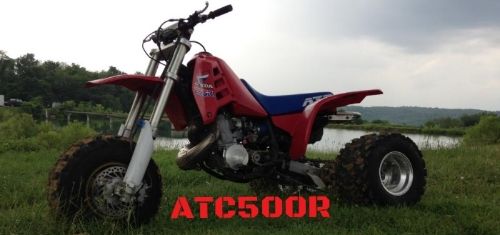Hey you guys, I was wondering how I could measure the rake on a threewheeler or dirt bike? I'm planning on building a custom trike from a dirt bike. I know that many members have not recommended doing the conversion for aesthetic problems but I have nothing to lose. I know that first you have to have your rear end set at the preferred height angle but what is the best rake for an atc if you are running a leading axle? If running a trailing axle?



 Reply With Quote
Reply With Quote


 but I have to run. Basically I would pin the swing-arm pivot solid on the jig at the height you want it to be when you are riding and then manipulate the front axle to suit the rest of your needs. Just make sure you can hold it solid when welding.
but I have to run. Basically I would pin the swing-arm pivot solid on the jig at the height you want it to be when you are riding and then manipulate the front axle to suit the rest of your needs. Just make sure you can hold it solid when welding.